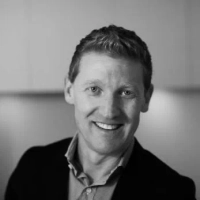What Creative Solutions Have Been Implemented to Overcome Barriers in Public Health Education?
In a world where public health challenges are ever-evolving, innovative solutions are crucial to making a lasting impact. This article uncovers seven groundbreaking strategies that experts have pioneered to break barriers in public health education and outreach. From creating a Community Dental-Health Fair to leveraging partnerships with community leaders, these insights showcase the power of creativity and collaboration. Discover the full range of these inspiring approaches and see how they are making a difference.
- Create a Community Dental-Health Fair
- Introduce Workplace-Wellness Programs
- Deploy Mobile Health Clinics
- Implement Gamified Health Interventions
- Launch Culturally Tailored Campaigns
- Utilize Digital Storytelling Platforms
- Leverage Partnerships with Community Leaders
Create a Community Dental-Health Fair
As a professional dentist with years of experience, one creative solution I implemented to overcome barriers in public-health education was the development of a community dental-health fair. Recognizing that many people in our community had limited access to dental information and services, I partnered with local schools, community centers, and health organizations to create an event that was both informative and engaging. We offered free dental screenings, educational workshops on oral hygiene, and fun activities for children, such as interactive games that taught them about the importance of taking care of their teeth. This hands-on approach not only made dental health more approachable but also fostered a sense of community involvement.
Additionally, we utilized social media and local influencers to spread the word about the event. By sharing stories and testimonials from community members who benefited from our services, we created a buzz that encouraged participation. This strategy not only increased attendance at the fair but also helped break down misconceptions about dental care. By making oral-health education accessible and enjoyable, we were able to reach a broader audience and empower individuals to take charge of their dental health in a supportive environment.

Introduce Workplace-Wellness Programs
One creative solution I implemented to overcome a barrier in public health education was addressing the challenge of engaging corporate workers in their own musculoskeletal health. Many of our clients at The Alignment Studio work long hours at desks and don't realize how much their posture and sedentary lifestyle contribute to chronic pain and injuries. Instead of traditional outreach methods, which often didn't resonate with busy professionals, we introduced workplace-wellness programs that combined ergonomic assessments, movement workshops, and digital health resources. These programs were designed to educate workers about the importance of posture, movement, and self-care while giving them practical strategies they could implement immediately, even in the office environment.
My 30 years of experience in physiotherapy and a deep understanding of postural health played a key role in shaping this approach. Drawing from my background in musculoskeletal rehabilitation, I was able to create targeted interventions that addressed common issues like neck and back pain, repetitive strain injuries, and poor workstation ergonomics. For example, we conducted on-site sessions that demonstrated how small changes in desk setup or regular micro-breaks for stretching could prevent long-term damage. This solution not only improved our clients' health outcomes but also enhanced their productivity and engagement in the workplace, creating a win-win for both employees and employers.

Deploy Mobile Health Clinics
Mobile health clinics have been a key innovative solution, taking important health education and services directly to underserved and remote communities. These clinics are equipped with necessary medical tools and staffed by healthcare workers who can offer both treatment and preventative advice. By bringing healthcare to the doorsteps of those who otherwise might not have access, these clinics bridge gaps in the health system.
They also offer educational materials to patients, helping spread awareness on various health issues. More initiatives like this can ensure that no community is left behind in health education.
Implement Gamified Health Interventions
Gamified health interventions have revolutionized how young people learn about health by making education fun and interactive. These interventions use elements of games, such as rewards and challenges, to teach children about nutrition, exercise, and mental well-being. By engaging youth in a manner that feels like play, these programs successfully instill healthy habits that can last a lifetime.
Moreover, the interactive aspect encourages consistent participation, making the learning process more effective. Efforts to integrate gamification into more health education programs can improve overall public health outcomes.
Launch Culturally Tailored Campaigns
Culturally tailored campaigns have proven effective in addressing health disparities by connecting with diverse populations. These campaigns consider specific cultural beliefs, practices, and languages, ensuring the messages reach and resonate with target audiences. By respecting and incorporating cultural values, these educational efforts promote better understanding and acceptance of healthy behaviors.
This tailored approach not only educates but also empowers communities to take charge of their health. Expanding such inclusive campaigns can address and reduce health inequalities across different communities.
Utilize Digital Storytelling Platforms
Storytelling through digital media platforms has made complex health topics more accessible and engaging for the general public. By using videos, podcasts, and social media, healthcare providers can present information in an easily digestible format. Stories can illustrate real-life scenarios and outcomes, making the information more relatable and memorable.
These digital stories reach a wide audience, facilitating a broader dissemination of crucial health education. Encouraging the use of digital storytelling can simplify health information and improve public comprehension.
Leverage Partnerships with Community Leaders
Partnerships with trusted community leaders have amplified health messages, leveraging the influence of these figures to promote behavior change. Community leaders, whether they are religious figures, local politicians, or grassroots activists, hold sway and are respected by their communities. By collaborating with these leaders, health campaigns can gain credibility and reach broader audiences.
These partnerships ensure that health education is communicated in a trustworthy and culturally sensitive manner. Fostering more collaborations with community leaders can greatly enhance the spread and impact of health messages.

